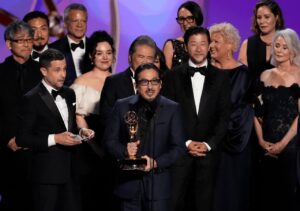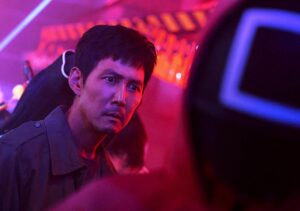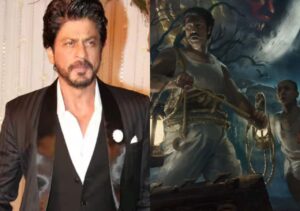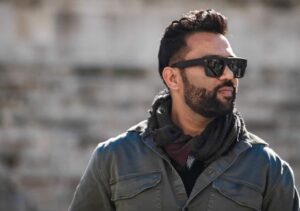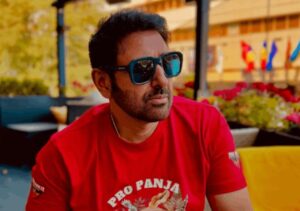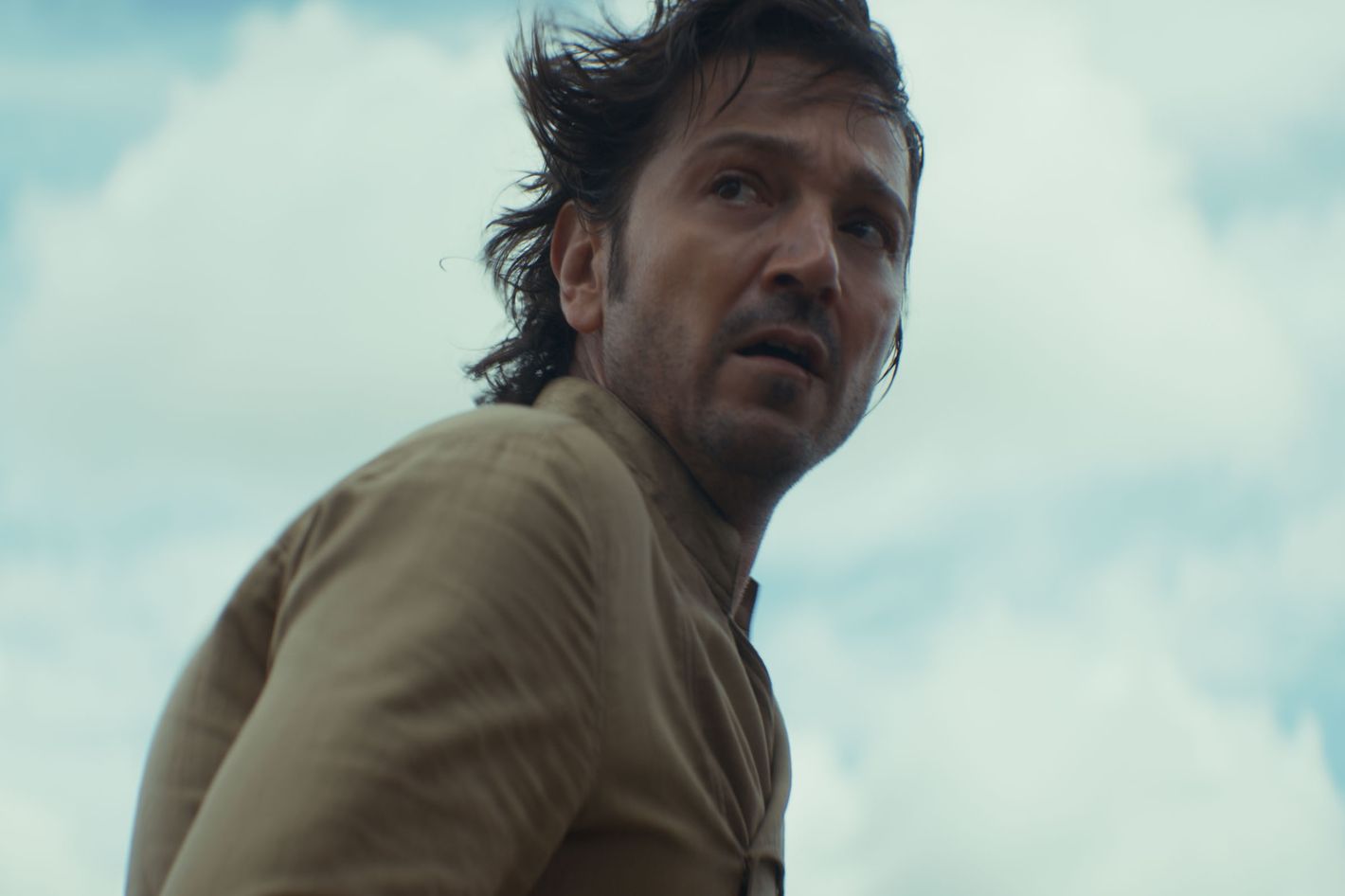
Sometimes you don’t realize how low you’ve set expectations until something comes along that reminds you to look up. That was certainly the case with Andor. When the Star Wars series debuted in September 2022, little about its logline suggested a clear pathway to greatness. A prequel series to Rogue One, a widely admired but uneven spinoff film shrouded in lore and whispers of postproduction salvaging? Sure, I suppose, but arriving mere months after Obi-Wan Kenobi, which marked a creative low point for the anemic franchise, there wasn’t much space to dream. That its showrunner was Tony Gilroy, the venerable writer-director behind thinky films like Michael Clayton, who was responsible for Rogue One’s rewrites and reshoots, wasn’t necessarily evidence for greatness, either; many distinguished filmmakers have had their visions ground down by the Star Wars machine before. (See Ron Howard’s Solo, Leslye Headland’s The Acolyte, etc.)
But Andor didn’t just turn out to be excellent television. It ended up being the best Star Wars has ever been, a fiercely intelligent spy thriller that rendered a galaxy far, far away in terms you could legibly graft onto the world right outside your door. In between blaster shoot-outs and ships jumping into hyperdrive, the series toyed with sophisticated ideas. What draws an individual to fascism? What turns a drifter into a revolutionary? What does middle-class housing in Coruscant look like? Andor’s characters felt like flesh-and-blood beings whose lives extended beyond their service to the story; you can tell they think about their laundry. Gilroy’s take on the universe felt so rich and alive that you couldn’t help but wonder: How the hell did this thing ever get made?
The question returns, quadruple-fold, with the show’s second season, which debuts its first three-episode “chapter” this week and completes the series’ bridge into Rogue One and, by extension, A New Hope. To cut to the chase: Andor remains a banger to the very end. The premiere picks up some time after where the first season left off, with Cassian Andor (Diego Luna) now a key player in Luthen Rael’s (Stellan Skarsgård) spy ring, carrying out missions to disrupt the Empire and lay the foundation for what will become the Rebel Alliance. Catching up with Cassian mid-operation, infiltrating an Imperial hangar to jack an experimental TIE fighter, we’re immediately reminded of Andor’s embrace of complexity, deftly conveyed through an early interaction where Cassian helps steel the resolve of an Imperial turncoat who’s struggling with her decision. “I’ve had fun here … that must sound strange,” she says, voice trembling, a glancing acknowledgment that life still exists within Imperial systems. “You’re coming home to yourself,” Cassian tells her, briefly blurring the line between resistance fighter and cult leader. “You’ve become more than your fear. Let that protect you.”
Cassian being the title character, this season still hangs on his arc, but he’s also largely decentered in the narrative, which ultimately treats him as one player in a much larger conflict. The opening stretch acutely reflects this, trapping Cassian in the middle of a pointless skirmish while spending more time rotating between the other pieces on the chessboard: Luthen and his confederate Kleya (Elizabeth Dulau); the other survivors of Ferrix, including Bix (Adria Arjona), a fellow Luthen operative and Cassian’s lover, as they try to lay low on a wheat-farming planet; Syril Karn (Kyle Soller), the Pre-Mor security official turned Imperial bureaucrat; Deedra Meero (Denise Gough), the intelligence officer with a grimace for the ages who continues to hunt for Luthen; and Mon Mothma (Genevieve O’Reilly), the senator who we know will become a leader of the Rebel Alliance.
As that long list of characters indicates, there’s a real sense of scale across these new episodes, which carries over to the season’s sweeping timeline. Its 12 episodes are structured according to three-episode arcs, each taking place across four successive years leading up to the events of Rogue One. The resulting briskness is something of a double-edged sword. Moving so liberally across time creates an addictive propulsiveness, but it also has the tendency to affix a cool emotional distance; the conclusion of each arc necessitates playing a little catch-up to figure out everybody’s interior state. But the true pleasure of Andor is how it counterbalances this steeliness by pouring a great deal of warmth into the depictions of its worlds. Ghorman, the pseudo-European planet where the season sets a great deal of its intrigue, is a vividly realized setting lined with cobblestoned streets, cafés, and fashion houses that collectively hint at a coherent cultural system we only get to see a sliver of. (If The Last Jedi’s Canto Bight is Space Monaco, the Ghor are the franchise’s Space French!) Star Wars fans finally get to see Chandrila, Mon Mothma’s home planet, through the lens of an elaborate wedding ritual as the senator marries her daughter off to a shady family for the sake of the Rebellion. What’s striking about Andor’s world-building is how matter-of-fact it is. A lesser hand may betray an eagerness to draw attention to the fantasy of it all, but here, they feel like spaces people actually live in — and clear grooves in which to deposit your emotional investment.
Andor was initially conceived as a five-season story, but Gilroy ultimately decided to condense the project down into two after estimating that the original blueprint was going to take too long to pull off. Alas, what a shame. We could’ve had dozens more hours of this show! Then again, perhaps the prospect was never truly feasible. As strange as it continues to be that Andor got made within the context of modern Star Wars franchise management, which has increasingly proven to be creatively conservative, it’s even stranger when you consider the resources it was given. The budget for the two Andor seasons combined will reportedly amount to the most expensive Star Wars production ever commissioned, beating even The Rise of Skywalker’s $416 million. Indeed, it’s genuinely stunning that Disney — which continues to deal with doubts about its long-term health, succession plan, franchise future, not to mention its capacity to navigate a contentious political environment — proceeded to spend all that money on a show that almost certainly has a hard cap to whatever viewership it can generate.
Andor isn’t just a “gritty” take on Star Wars. It’s a novelistic beast that’s confident enough to spend a third of its second-season premiere on what is basically a long boardroom meeting where bureaucrats talk about an energy-independence campaign that’s actually a weapons program. (As much as the scene is deeply sexy to my fellow Michael Clayton heads, it’s probably anathema to most conventional fans of the franchise.) Andor is also the kind of show that keeps exposition and explanation stoically sparse. Near the end of the sixth episode, Bix and Cassian embark on an operation whose provenance is principally left up to the viewer to infer. Shifts in a character’s psychology are only marginally expressed through dialogue, with the show often preferring to communicate such developments through nonverbal means. Note how Syril’s wardrobe evolves over time, for example, and what that suggests about his relationship to Ghorman. Andor’s subtlety probably won’t work for large swathes of the demographic coalition that Star Wars traditionally serves, so reliant on fan service or an errant Skywalker to juice devotion. Trade chatter around the first season’s viewership seems to bear this out. Despite the critical acclaim, Disney felt compelled to address its lower viewership relative to its other projects.
Nevertheless, Andor is capital well spent. This second season doesn’t just cement the show’s standing as the best Star Wars project ever made. It’s also the rare spinoff that deepens the best parts of the franchise around it. A New Hope will never feel so simple again. But its merit extends far beyond that. So much of Star Wars today feels like it’s in service to its own fantasy, its fandom, its escapism. Andor reorients that fantasy in the service of something greater than itself. Its tale of political awakening, rebellion, and the struggle against fascism is so vibrant that it wills you to gaze back up at the stars — and at your own world — with wonder. Andor is a miracle, and we’d be so lucky if we see something like it ever again.
More TV Reviews
Related
Andor’s second season doesn’t just cement the series as the best of the franchise, it also deepens the saga surrounding it.



